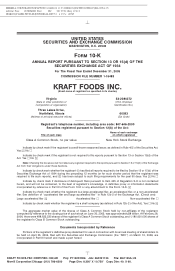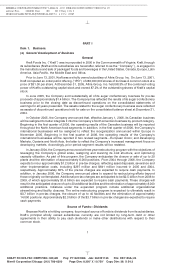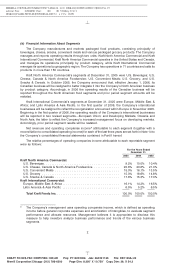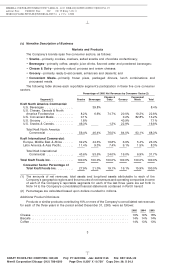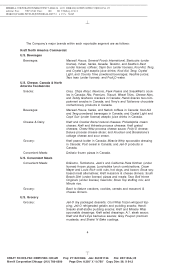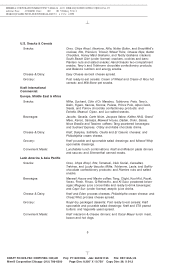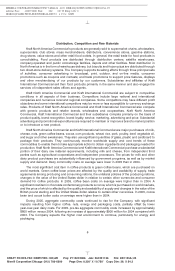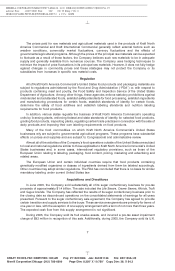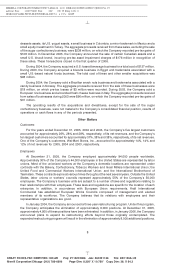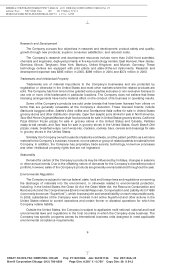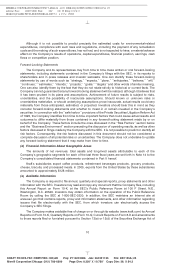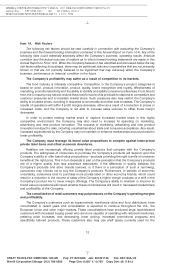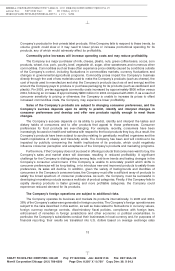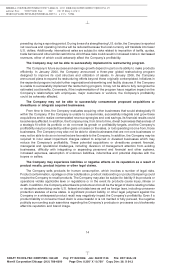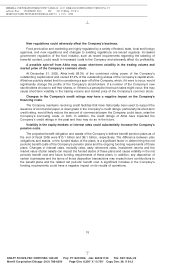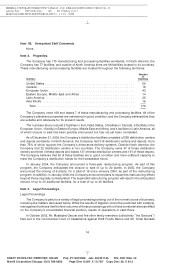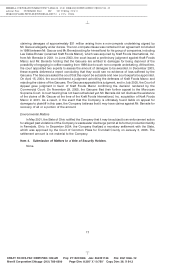Kraft 2005 Annual Report Download - page 8
Download and view the complete annual report
Please find page 8 of the 2005 Kraft annual report below. You can navigate through the pages in the report by either clicking on the pages listed below, or by using the keyword search tool below to find specific information within the annual report.
MERRILL CORPORATION MBLOUNT// 9-MAR-06 14:03 DISK126:[06CHI5.06CHI1135]DE1135A.;25
mrll.fmt Free: 110D*/120D Foot: 0D/ 0D VJ RSeq: 7 Clr: 0
DISK024:[PAGER.PSTYLES]UNIVERSAL.BST;51
KRAFT FOODS-FSC CERTIFIED-10K/AR Proj: P1102CHI06 Job: 06CHI1135 File: DE1135A.;25
Merrill Corporation/Chicago (312) 786-6300 Page Dim: 8.250 X 10.750Copy Dim: 38. X 54.3
The prices paid for raw materials and agricultural materials used in the products of Kraft North
America Commercial and Kraft International Commercial generally reflect external factors such as
weather conditions, commodity market fluctuations, currency fluctuations and the effects of
governmental agricultural programs. Although the prices of the principal raw materials can be expected
to fluctuate as a result of these factors, the Company believes such raw materials to be in adequate
supply and generally available from numerous sources. The Company uses hedging techniques to
minimize the impact of price fluctuations in its principal raw materials. However, it does not fully hedge
against changes in commodity prices and these strategies may not protect the Company or its
subsidiaries from increases in specific raw material costs.
Regulation
All of Kraft North America Commercial’s United States food products and packaging materials are
subject to regulations administered by the Food and Drug Administration (‘‘FDA’’) or, with respect to
products containing meat and poultry, the Food Safety and Inspection Service of the United States
Department of Agriculture. Among other things, these agencies enforce statutory prohibitions against
misbranded and adulterated foods, establish safety standards for food processing, establish ingredients
and manufacturing procedures for certain foods, establish standards of identity for certain foods,
determine the safety of food additives and establish labeling standards and nutrition labeling
requirements for food products.
In addition, various states regulate the business of Kraft North America Commercial’s operating
units by licensing plants, enforcing federal and state standards of identity for selected food products,
grading food products, inspecting plants, regulating certain trade practices in connection with the sale of
dairy products and imposing their own labeling requirements on food products.
Many of the food commodities on which Kraft North America Commercial’s United States
businesses rely are subject to governmental agricultural programs. These programs have substantial
effects on prices and supplies and are subject to Congressional and administrative review.
Almost all of the activities of the Company’s food operations outside of the United States are subject
to local and national regulations similar to those applicable to Kraft North America Commercial’s United
States businesses and, in some cases, international regulatory provisions, such as those of the
European Union relating to labeling, packaging, food content, pricing, marketing and advertising and
related areas.
The European Union and certain individual countries require that food products containing
genetically modified organisms or classes of ingredients derived from them be labeled accordingly.
Other countries may adopt similar regulations. The FDA has concluded that there is no basis for similar
mandatory labeling under current United States law.
Acquisitions and Divestitures
In June 2005, the Company sold substantially all of its sugar confectionery business for pre-tax
proceeds of approximately $1.4 billion. The sale included the Life Savers, Creme Savers, Altoids, Trolli
and Sugus brands. The Company has reflected the results of its sugar confectionery business prior to
the closing date as discontinued operations on the consolidated statements of earnings for all years
presented. Pursuant to the sugar confectionery sale agreement, the Company has agreed to provide
certain transition and supply services to the buyer. These service arrangements are primarily for terms of
one year or less, with the exception of one supply arrangement with a term of not more than three years.
The expected cash flow from this supply arrangement is not significant.
During 2005, the Company sold its fruit snacks assets, and incurred a pre-tax asset impairment
charge of $93 million in recognition of this sale. Additionally, during 2005, the Company sold its U.K.
7
6 C Cs: 60698

